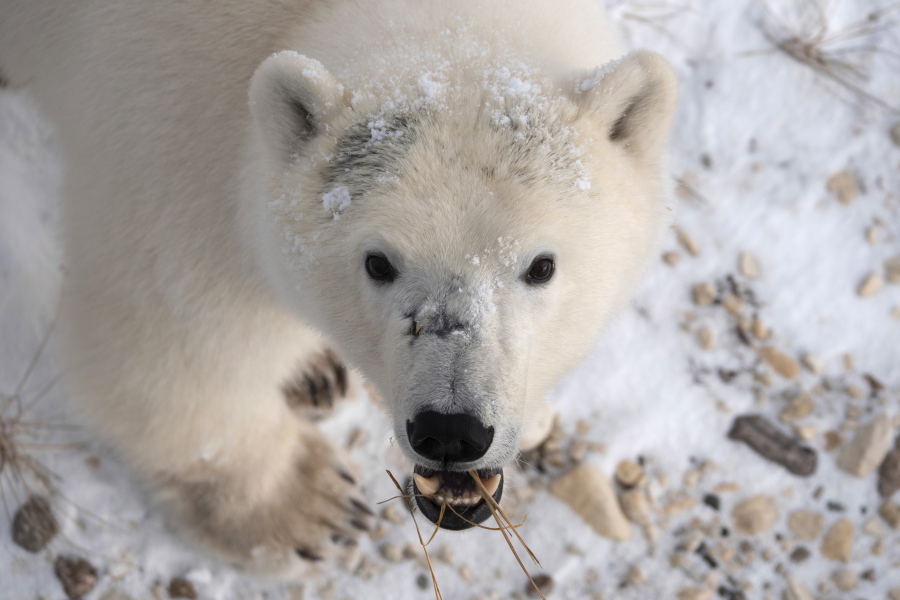SEATTLE — Polar bears and their cubs will starve faster in the coming decades as greenhouse gas emissions hasten the decline of Arctic ice, scientists found in a new study.
The connection between melting Arctic ice and declining polar bear populations has been generally understood for decades, but a study published Thursday in the journal Science is the first to directly quantify the relationship.
Understanding more specifically how greenhouse gas emissions lead to dying polar bears is an important step in protecting the threatened species, said Cecilia Bitz, an atmospheric sciences professor at the University of Washington and one of the study’s authors.
Polar bears hunt seals, their primary source of food, on Arctic ice, Bitz said. Melting ice means they have more difficulty finding food and will go hungry, increasing their risk of starvation and cutting into their ability to raise cubs to the age of independence.
“This is really all about how fast we emit,” Bitz said. “And the more we emit, the unfortunate truth is the more the polar bears will suffer.”
Hundreds of power plants across the United States will collectively emit more than 60 gigatons of greenhouse gases over their life spans, Bitz said.
For context, 60 gigatons of carbon dioxide holds enough volume to fill Lake Superior nearly three times.
Those gases fill the atmosphere, warm the environment and melt Arctic ice. NASA estimates the ice is shrinking nearly 13% per decade. That declining habitat will lead to a 4% decline in polar bear cub survival in the southern Beaufort Sea, which is north of Alaska and Canada’s Yukon and Northwest Territories, Bitz said.
For the study, Bitz said she examined how often bears kill and eat seals and how long each meal lasts before they must feed again. She then compared that with the speed of Arctic ice melting and greenhouse gas emissions to determine how many additional days a year a bear is likely to go hungry as emissions increase.
While a 4% decline might not seem large, it shows a direct link between greenhouse gas emissions and the survival of the polar bears, Bitz said. That’s important when considering projects that would result in more emissions, including new oil and gas wells.
The U.S. Endangered Species Act requires government-authorized projects not to further harm protected species, but a 2008 Department of Interior memo presents a problem, Bitz said. That document, now known as the Bernhardt Opinion, essentially says greenhouse gas emissions haven’t been specifically shown to harm endangered species and so they can’t be a factor when federal officials decide whether to approve new projects.
But this study shows the direct influence greenhouse gas emissions have on the species, said Steven Amstrup, the study’s lead author and a professor with the University of Wyoming, in a release.
“We’ve caused that memo to be irrelevant,” Bitz said.
Federal officials should take notice of the change, Bitz said, and prevent new oil and gas drilling projects.
The United States isn’t the only country emitting greenhouse gases, Bitz acknowledged. But it should be a global leader in reducing those emissions. Without a change, Arctic ice will continue to melt and polar bears will continue to starve.
This study has implications beyond the world of struggling polar bears, said Bitz and Amstrup, who is also chief scientist emeritus at the environmental nonprofit Polar Bears International. The same type of analysis could be done for other endangered species harmed by climate change, such as bleaching coral reefs or birds at risk of rising sea levels.



